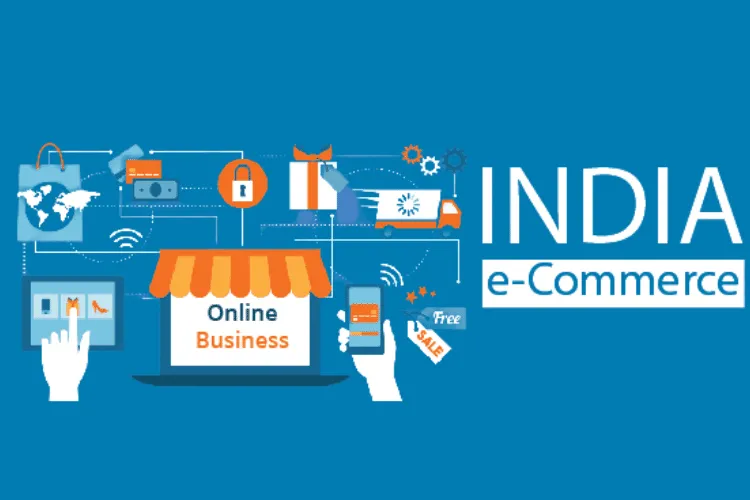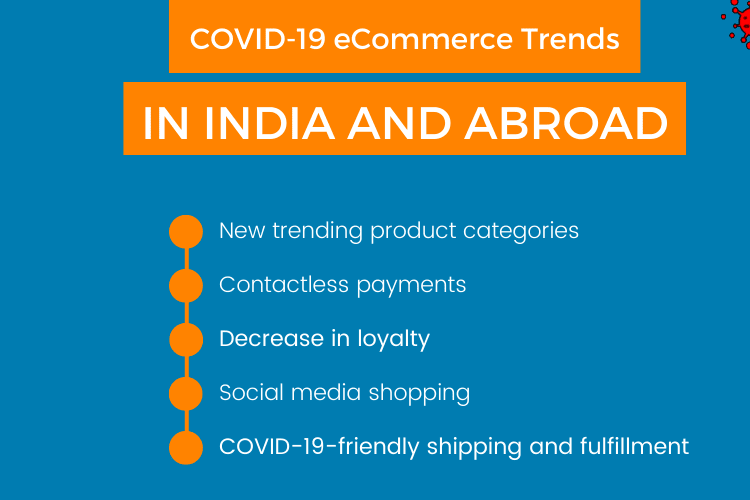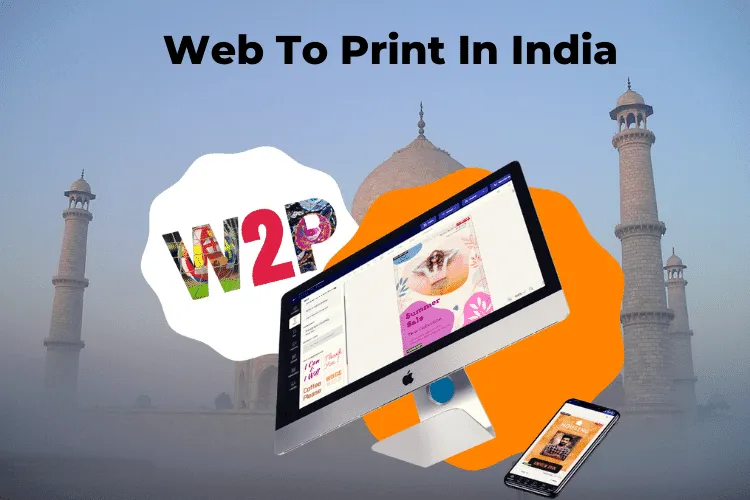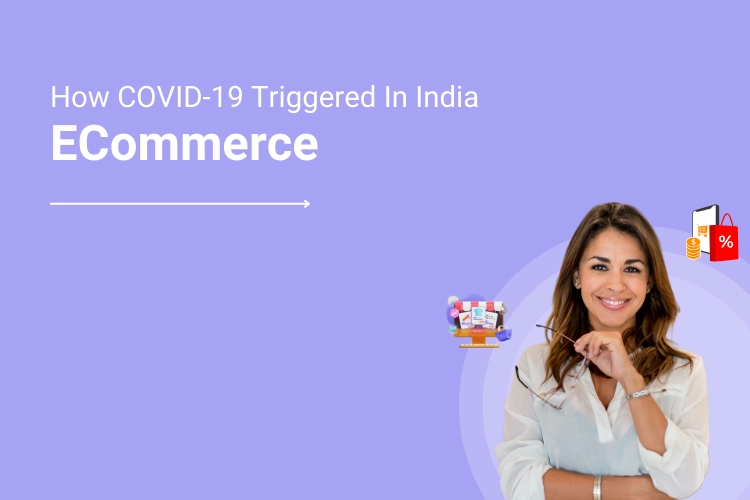The global pandemic has undoubtedly cemented the need for eCommerce. Pre-COVID-19, shopping online was just another option for consumers of today besides actually going to a brick-and-mortar store. However, that is not the case anymore.
When all essential and non-essential shops went into a lockdown across the globe, everyone’s reliance on eCommerce increased manifold. It became the only way everyone could shop – without worrying about social distancing – and having their orders delivered to their doorstep.
The Indian eCommerce market was no exception. Many companies were compelled to re-evaluate their decades-old established business practices.Most of them invariably took a digital-first approach (in the guise of web-to-print online designer), and those who refused to adapt perished.
- The growth spurt in the Indian eCommerce ecosystem
- Many thrived, some survived, and others fell behind
- COVID-19 eCommerce trends in India and abroad
- The picture of online shopping based on demographics
- Winners and losers of the eCommerce shift
- International competitors for Indian eCommerce businesses
- Come, let us create magic with web2print in India
- Short-run print jobs made simple
- How your India-based business can succeed by deploying the best web2print solution
- Will eCommerce’s popularity continue into post-COVID-19 India?
- Over to you
The growth spurt in the Indian eCommerce ecosystem

The pandemic brought about a “structural shift” in shopping behaviors. Players such as Flipkart, BigBasket, Swiggy, Amazon, and the local Kirana stores prioritized safety by bumping up their operations remotely and delivering goods to customers.
Even though it took them a while to adapt to the ever-changing rules and regulations regarding the lockdown, some survived and thrived. Not so surprisingly, India’s eCommerce industry will be worth $111 billion by 2024.
The growth is said to be driven by mobile shopping, and it is predicted it will grow by 21% annually over the next four years. Research also shows that digital wallets (40%) and credit and debit cards (15%) are the most popular payment methods amongst Indian online shoppers.
Many thrived, some survived, and others fell behind.
Today, eCommerce capability is no longer limited to only traditional sites. Physical retail has comfortably blended with the digital world. The shop floor is in the palm of our hands, and Indian consumers expect a hassle-free shopping experience.
Businesses that put customer convenience at the heart of the checkout process and leverage multiple digital payment options on their will be better positioned to capture the next wave of growth in the eCommerce market in India.
COVID-19 eCommerce trends in India and abroad
If you have read this far, you will agree that retailers really stepped up to the challenge during the pandemic. A NielsenIQ study shows that 67% of all consumers changed the way they shop due to COVID-19, and this statistic is poised for further growth.
Here are the top eCommerce trends that emerged because of the Coronavirus outbreak:

1. New trending product categories
The grocery eCommerce landscape has changed dramatically since March 2020. In fact, it has evolved faster by three to five years. Online grocery penetration settled at 9%-12% before the year 2020 ended.
Similarly, fitness products and home gym equipment also saw a buying surge. The furnishings and household goods market grew by 5.7%. There is also an increase in the rise of product customizer software solutions, quenching the thirst for personalization.
2. Contactless payments
3. Decrease in loyalty
4. Social media shopping

Several social media platforms, such as Instagram and Facebook, have empowered consumers to browse through and buy products of their choice without leaving the channel.
With social media being so closely integrated with the eCommerce business, it became easier for the latter to earn yet another source of conversions.
5. COVID-19-friendly shipping and fulfillment
Third-party delivery providers such as Instacart, Uber Eats, DoorDash, and Swiggy (in India) are doing their bit to accelerate deliveries of grocery stores. This is a win-win situation for both parties as they capture a larger market and earn higher revenues.
Set up your own eCommerce store with DesignO Today!
The picture of online shopping based on demographics
The pandemic has witnessed different genders and age groups adopt eCommerce in various ways. For instance, 30% of millennials are shopping online more frequently than only 24% of Gen Z. However, both generations are concerned about the ripple effect of COVID-19.
On the other hand, only 8% of Baby Boomers are shopping online, although there is little evidence of them being less worried about the pandemic after-effects. However, almost everyone across generations has cut back on spending and is bulk buying certain items.
Some disparity was also found between genders, with 18% of women shopping more frequently online than 24% of men. Moreover, 33% of men compare products before placing an order, whereas only 25% of women tend to run a comparison.
According to The Financial Times, the wealthy have become more accustomed to buying online and enjoying higher levels of luxury. This has resulted in businesses adapting fast, with some of the world’s finest restaurants offering dine-at-home options.
Even India-based food delivery service provider Swiggy has introduced a “gourmet” option to cater to those customers who want to order food from high-end restaurants in their area or city. That is how much eCommerce has evolved due to the pandemic!
Winners and losers of the eCommerce shift
International competitors for Indian eCommerce businesses
Somewhere down the line, every eCommerce business globally has faced similar challenges. However, as an Indian eCommerce shop, you must keep an eye on how your competitors, in general, are performing.
Here are the top international eCommerce businesses to watch out for:
- Rakuten from Japan
- Amazon from the US
- Zalando from Germany
- JD and Alibaba from China
- Coupang from South Korea
Come, let us create magic with web2print in India

Web2print is essentially a production model wherein printers use online tools to create high-quality print products for their Indian customers.
The product configurator software uses templates that their target audience can personalize for various products, including trophies, t-shirts, signage, brochures, printeriors, and so on.
They control every stage – from the choice of template to the type of material on which the products will be printed to the order quantity. The Indian print service provider, on the other hand, can track production and ensure the shipment reaches the customers on time.
Growth in web to print solutions means anyone can connect with print service providers based anywhere in the country instead of relying on a local print shop.
Short-run print jobs made simple

Traditionally speaking, bulk printing was common. Consumers want limited quantities of a print product (e.g., business cards) that you can only afford to sell in bulk. This leads to resource wastage and is not a cost-effective option.
But due to hyper-personalization, short-run print jobs have become relatively common. Be it paper fabric or any other texture, a product designer tool has made printing in smaller quantities possible and more feasible.
How your India-based business can succeed by deploying the best web2print solution
Several features make web2print the ideal option if you want to sell personalized products cost-effectively and conveniently on your website.
Here is how you can change the game for your Indian eCommerce business for the better in a post-pandemic world:
1. Provide print-ready templates
Indian consumers of today love personalization, and they most definitely like the option of choosing a beautiful template for a product of their choice and tweaking its design before placing an order on it.
With your web-to-print online designer, you can cover various products, such as business cards, banners, menus, flyers, signage, newsletters, and so on.
2. Let the users personalize independently
Personalization is one of the biggest reasons Indian businesses count on a product designer tool for their marketing requirements. Indian consumers are all about embracing their uniqueness.
And if you can give them the option to customize print-ready templates based on texture, finish, color palette, logo placement, and other parameters, there is nothing like it!
3. Automate your Indian print workflow
If there is one thing that Web2print software promises, it enables a flexible and convenient shopping experience on your Indian web2print store. This makes it easy for your customers to upload their designs, edit print-ready templates, and place orders conveniently.
4. Optimize your web to print storefront
A robust web2print storefront solution empowers you to control your frontend and backend completely. You can add a range of features, including comprehensive search filters, multi-language, and multi-currency support, one-click checkout, one-click reorder, and order tracking.
5. Increase your daily orders and profitability
Join suitable global and Indian marketplaces. Consider setting up extensions of your storefront on big marketplaces like Etsy or Amazon and leverage their customer base. Similarly, list your store on popular Indian business directories where you can promote your offerings and also increase your chances of getting discovered.
You can join a BNI group and attend meetings to highlight what your company does and how Indian consumers can benefit from web2print in general. The more you promote yourself, the more eyeballs you grab from potential customers, leading to higher sales and revenues.
Will eCommerce’s popularity continue into post-COVID-19 India?
Absolutely! With the rise of business models where groceries are being delivered in under 10 minutes, there is no doubt that a more significant number of people will start relying on online shopping for their everyday needs.
The pandemic has brought about an irreversible change in shopping behaviors. Those who hesitated about shopping online have no qualms about it today. That is how fast everyone has pivoted because of the Coronavirus outbreak.
Plus, low prices and convenience-driven competition seem to have taken the customers by storm. They have no shortage of choices.
Over to you
In conclusion, web2print is a reliable and affordable option for businesses and print service providers who want to tap into the online print market in India. Now is the perfect time to set up an eCommerce print storefront with all the print products you wish to deal in.
Of course, you would have to constantly market it like any other business. But given how the eCommerce sector is moving in India, you cannot be left behind.
If you would like to know more about web to print software, please get in touch with us by booking a free consultation.






